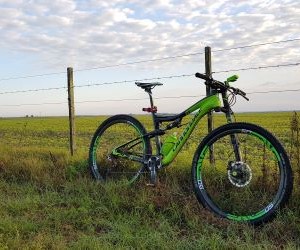Learn how to deal with punctures on long rides with prevention tips, repair techniques, and smart gear choices to keep rolling without stress.
HOW DO I CYCLE EFFICIENTLY IN HEADWINDS?
Riding into a headwind can be frustrating and exhausting, but with the right strategies, it becomes a test of skill rather than a struggle. Efficient cycling in headwinds is about smart energy management, optimal gear use, and aerodynamic positioning. Whether you’re a competitive cyclist or a weekend rider, learning how to adapt your technique in windy conditions ensures you maintain speed without burning out too early. This guide covers body positioning, pacing tactics, drafting, and equipment adjustments that make riding into the wind manageable—and even strategically advantageous.

Aerodynamics and body position
Wind resistance is the single largest factor slowing you down when cycling into headwinds. Reducing your aerodynamic drag is key to saving energy and sustaining speed. Your body acts as the biggest “sail,” so positioning becomes more critical than equipment.
Lowering frontal area
By riding in the drops or adopting a time-trial position, you minimize your exposed surface area. This reduces drag significantly, even if you maintain the same power output. Small adjustments—like tucking elbows inward—can save dozens of watts in strong winds.
Relaxation and efficiency
Cyclists often tense up when pushing against wind. Staying relaxed, keeping shoulders low, and maintaining smooth pedaling efficiency prevent wasted energy. Controlled breathing also helps maintain rhythm under strain.
Use drops or aero bars for lower posture
Keep elbows tucked and relaxed
Engage core for stability at higher efforts
Stay smooth—avoid jerky pedaling
Mastering body position not only reduces resistance but also builds mental confidence when facing long windy stretches.
Pacing and gear management
Headwinds tempt riders to push too hard early, leading to rapid fatigue. Efficient cycling requires disciplined pacing and smart use of gears to sustain effort without burning out prematurely.
Adjusting effort strategically
Instead of trying to maintain your usual speed, focus on maintaining a steady power output. Let the wind dictate slower speed temporarily—what matters is preserving energy for the full ride. Pacing apps or power meters help track consistent effort.
Gear selection for endurance
Using slightly lower gears allows you to spin smoothly instead of grinding against resistance. This saves muscular fatigue and keeps cadence efficient. Advanced riders balance cadence between 85–95 rpm to optimize endurance in windy conditions.
Focus on power, not speed
Shift into lower gears for fluid cadence
Avoid surging—keep steady effort
Plan nutrition for longer headwind segments
By pacing smartly and managing gears, you protect your legs for later in the ride when conditions may improve or when finishing strong is crucial.
Drafting and equipment choices
While solo cyclists must rely on technique and discipline, group riders gain enormous advantages by drafting. Pairing aerodynamic gear with smart positioning creates a layered defense against headwinds.
Drafting efficiency
Cyclists riding behind others save up to 30% of energy, even in heavy winds. Group rotations, where riders take turns pulling, distribute effort evenly. For solo training, finding a rider of similar pace to share pulls can make long windy sessions manageable.
Equipment upgrades
Aerodynamic helmets, skin-tight jerseys, and deep-section wheels all reduce drag. For budget-conscious cyclists, even simple steps like removing handlebar accessories or adjusting clothing fit provide measurable benefits.
Ride in a paceline for shared effort
Use aero helmets and snug clothing
Choose wheels optimized for crosswinds
Minimize accessories that catch wind
The combination of drafting and equipment optimization allows riders to stay efficient, conserving energy for when the wind shifts in their favor.
YOU MAY ALSO BE INTERESTED






